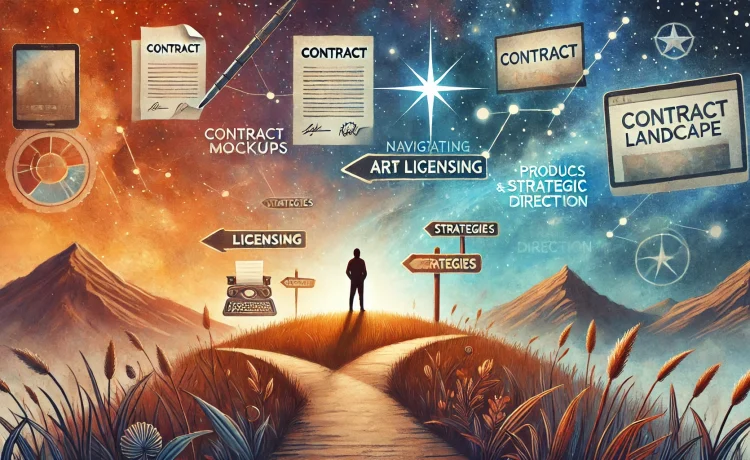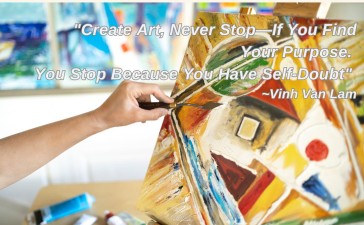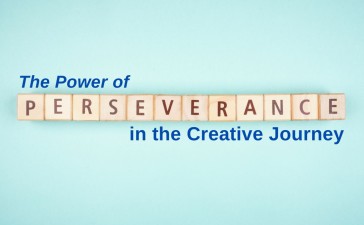Embarking on a career in art licensing offers artists and designers the opportunity to see their creations on a variety of products, from textiles to home décor. However, success in this field requires more than just talent; it demands consistency, patience, and a strategic approach to building and presenting your portfolio.
Understanding Art Licensing
Art licensing involves granting permission to companies to reproduce your artwork on their products for a specified period, while you retain the copyright. In return, artists typically receive royalties based on product sales or a flat fee. This model allows artists to reach broader audiences without the complexities of manufacturing and distribution.
The Myth of Immediate Success
Investing significant time and resources into creating a few seamless patterns or a single collection does not guarantee licensing deals. The art licensing industry is unpredictable; not every piece will secure a license, regardless of the effort invested. Therefore, relying solely on a limited body of work can be limiting.
Consistency: The Cornerstone of Licensing Success
Building a robust and diverse portfolio is crucial. Consistently producing new patterns and collections serves multiple purposes:
- Increased Visibility: A larger portfolio showcases your versatility and keeps your work fresh in the minds of potential licensees.
- Market Relevance: Regular updates allow you to align with current trends, making your work more appealing to manufacturers seeking contemporary designs.
- Cross-Promotion: New designs can draw attention to your existing work, creating a synergistic effect that enhances the appeal of your entire collection.
Consider the experience of artists who, over 12 months, diligently created multiple collections and individual patterns. Despite persistent efforts and proactive promotion—including sending portfolios to manufacturers and art directors—they initially faced discouragement due to the lack of immediate licensing deals. However, patience proved vital. Approximately a month later, several of their earlier collections, created over a year prior, were licensed. This outcome highlights a critical lesson: the decision-making process of buyers and art directors takes time. They must ensure that new collections complement their existing product lines and resonate with their brand identity.
Quality and Quantity: A Balanced Approach
While building a substantial portfolio is important, maintaining high-quality standards across all your work is equally essential. Each piece should reflect your unique style and meet professional benchmarks. A cohesive and well-curated collection signals to potential licensees that you are a dedicated and reliable artist.
Moreover, a diverse portfolio increases the likelihood that your work will align with the varied needs of different manufacturers. Some may seek bold, contemporary designs, while others prefer classic, timeless patterns. Offering a range of styles and themes enhances your chances of securing multiple licensing agreements.
The Role of Patience and Persistence
The art licensing industry is not a realm of instant gratification. It requires artists to exercise patience and persistence. The time between creating a piece and seeing it licensed can span several months or even years. During this period, it’s crucial to continue producing new work, refining your style, and actively promoting your portfolio.
Engaging with the artistic community, attending industry events, and building relationships with potential clients can also open doors to licensing opportunities. Remember, each interaction is a step toward establishing your reputation and expanding your network.
Building an Effective Portfolio
An effective art licensing portfolio should be:
- Organized: Present your work in a structured manner, grouping similar themes or styles together.
- Accessible: Ensure your portfolio is easy to navigate, whether it’s a physical collection or a digital gallery.
- Professional: High-quality images and clear descriptions reflect your commitment to your craft.
- Versatile: Showcase how your designs can be adapted across various products, demonstrating their commercial viability.
Regularly updating your portfolio with new work not only keeps it dynamic but also signals to potential licensees that you are actively engaged in your practice.
Managing Expectations
Approach art licensing with realistic expectations. Not every design will be licensed, and not every licensing deal will lead to significant financial gain. However, each experience contributes to your growth as an artist and enhances your understanding of the market.
Success in art licensing is a cumulative process. The more high-quality, market-relevant work you produce, the greater your chances of securing licensing agreements. Consistency, patience, and a proactive approach to building and presenting your portfolio are key components in navigating the art licensing landscape.
Conclusion
Embarking on an art licensing journey requires more than just creative talent; it demands dedication, strategic planning, and resilience. By consistently creating and showcasing quality work, understanding the industry’s timelines, and maintaining a professional and versatile portfolio, artists and designers can enhance their prospects of achieving success in the art licensing arena.
Want to learn more?
- Find out more
- Launch Pad + Accelerator Expressions of Interest
- Selling and Licensing Your Art & Designs Around the World with ArtSHINE.
We’re here to help you to take action, just like we’ve helped thousands of other entrepreneurs, business owners, and creative professionals all around the globe.
Now is the time to let your passion SHINE.
Now is the time to Make Tomorrow Today!
To your success, Vinh Van Lam and Stuart Horrex Cofounders
ArtSHINE.com





